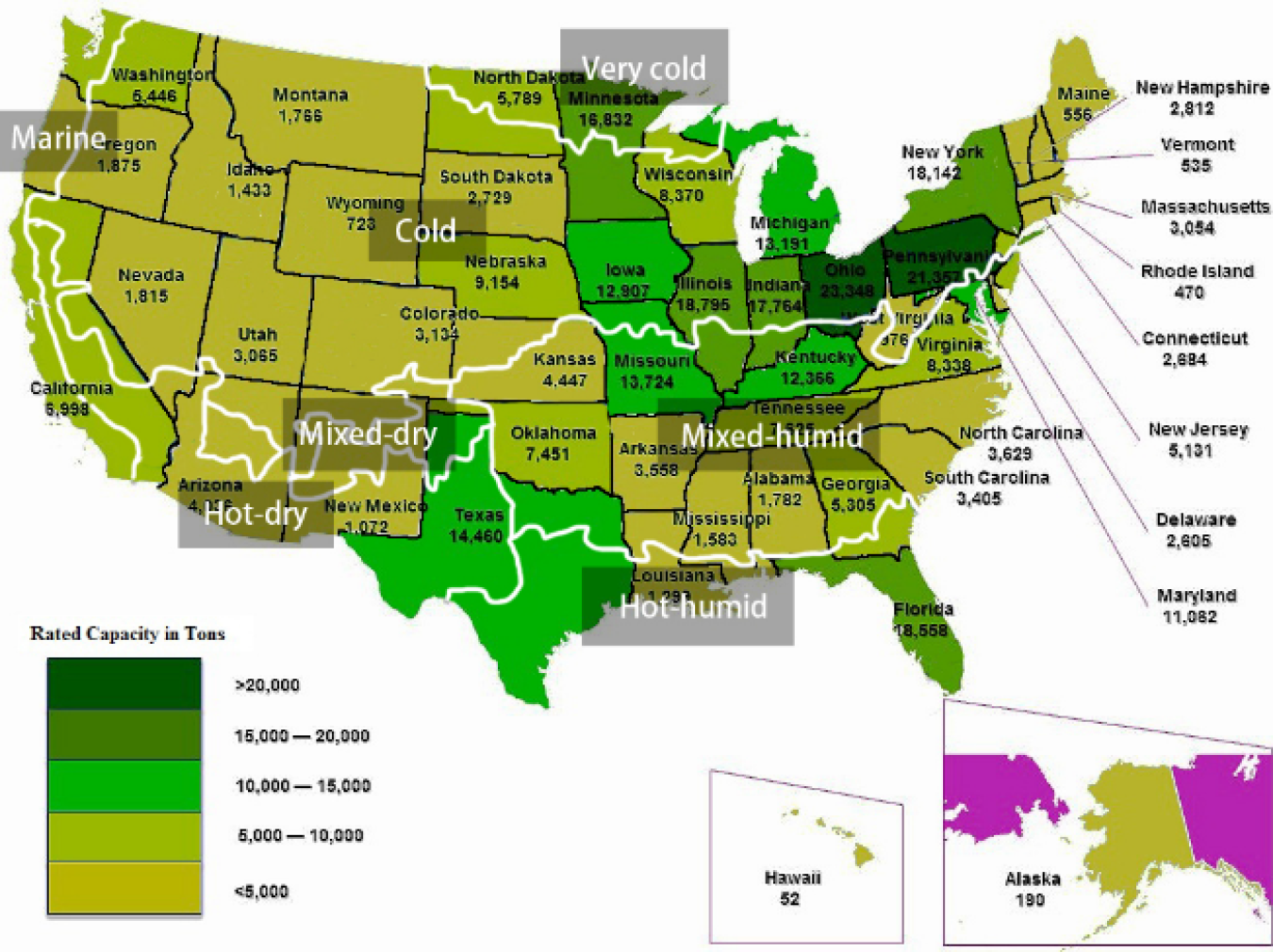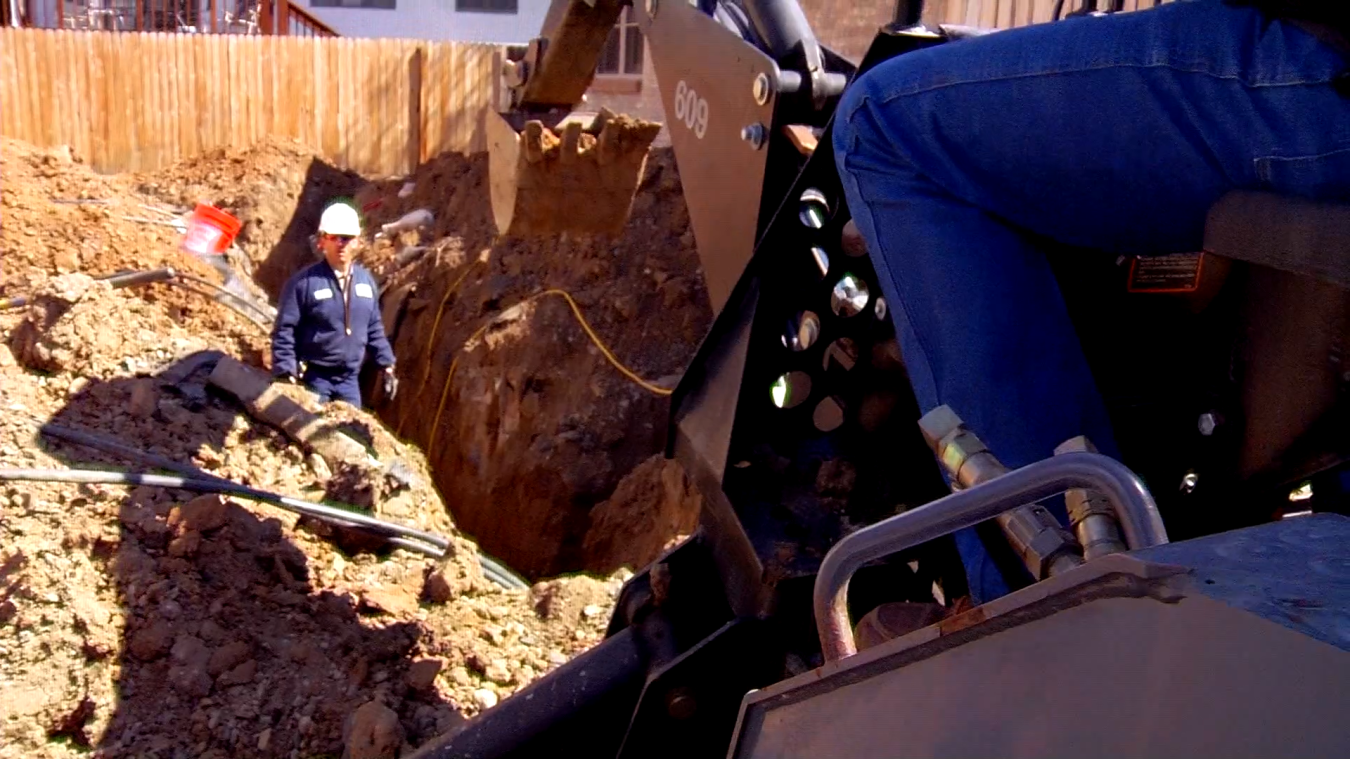Geothermal heat pumps can heat, cool, and even supply hot water to a home by transferring heat to or from the ground.
Office of Critical Minerals and Energy Innovation
August 1, 2017Consumers have a lot of choices these days when it comes to heating and cooling systems. One option is right below their feet—taking advantage of the earth’s constant underground temperature nearly 30 feet below the surface.
Watch and learn more about geothermal heat pumps.
Geothermal heat pumps (GHPs), also known as ground-source heat pumps, can heat, cool, and even supply hot water to a home by transferring heat to or from the ground. This technology has been keeping consumers comfortable for more than 50 years and can cut energy bills by up to 65% compared to traditional HVAC units.
So, if you’re considering installing a GHP system for your home or business, listen up. Here are five things you need to know about geothermal heat pumps.
Geothermal Heat Pumps Can Be Used in Any Climate
Geothermal heat pumps can operate in any climate—hot or cold—because of the earth’s constant underground temperature (from 45° to 75° F depending on location). In fact, millions of GHP systems are already heating and cooling homes and businesses worldwide, and that includes all 50 U.S. states.
According to a U.S. Department of Energy report, more than half of GHP shipments in 2009 went to 10 states: Florida, Illinois, Indiana, Michigan, Minnesota, Missouri, New York, Ohio, Pennsylvania, and Texas. The map below also shows a higher concentration of GHP applications in states that have cold climates and high population densities.

Distribution of GHP unit shipments in the United States in 2009 (Source: EIA 2010) (Note: the number below each state name indicates the total capacity of GHP shipment in 2009 in the particular state; the white lines indicate climate zones).
Open and Closed-Loop Systems
Consumers have several options to consider when it comes to selecting a GHP system, including closed- or open-loop designs. The majority (85%) of GHPs in the United States use ground heat exchangers to circulate fluid through a closed-loop design. The pipes are typically made of plastic tubing and are buried horizontally (up to 6 feet deep) or vertically (up to 600 feet deep). The design of a ground heat exchange system can vary and depends on the climate, soil conditions, land availability, accessibility to groundwater or surface water bodies, and local installation costs at the site.
Geothermal Heat Pumps Last a Long Time
Think of GHPs as a long-term investment. They’re built to last and have extremely long life spans. Expect to get around 25 years out of GHP indoor components (i.e. the heat pump) and 50-plus years for ground loops.
Although installation costs can be up to several times more expensive, GHPs are up to 65% more efficient than traditional HVAC units and pay themselves back over time in energy savings—typically within 10 years.
Geothermal Heat Pumps Reduce Peak Electricity Demands and Carbon Emissions
As mentioned above, GHPs are more energy efficient than traditional HVAC systems and can help lighten the load on the electric grid, especially during summer peak demand. In addition, they can help reduce carbon emissions thanks to their high efficiency.

The installation of geothermal heat pumps can never be outsourced which helps stimulate local economies.
Geothermal Heat Pumps Create U.S. Jobs
GHP systems also help grow the U.S. energy economy. Virtually all of the parts (ground heat exchangers, heat pumps, etc.) are made in the United States and the installation of GHPs can never be outsourced. This helps stimulate local economies by hiring area contractors to dig holes and install each GHP system.

